 Invermere home inspection services Invermere home inspection services Home heating, ventilation, and air-conditioning (HVAC) systems that have a central air handler and ducting should be equipped with air filters. The purpose of air filters is to remove particulates (such as dust) from the air stream to protect the system from degradation by keeping internal components clean of particulate build-up that could cause lower equipment efficiency, reduced reliability, and diminished heat transfer. 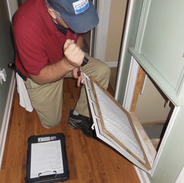 HVAC filters are typically located in the return duct line adjacent to the air handler or on the back of the return register grille(s), where they trap particulates in the air pulled into the return ducts by the air handler. Filters are available in a range of styles, materials, and sizes. They’re generally 1 to 4 inches thick, made of polyester and/or fiberglass, and styled in a flat or pleated pattern. Filters use either mechanical filtration or electrostatic filtration to remove particulates from the air. Mechanical (i.e., surface media) filtration is the capturing of particulates through a dense fiber medium. The filter media are typically pleated, which allows more surface area to capture debris. Electrostatic filtration uses electrostatic precipitation to remove particulates. Some filter models on the market combine mechanical and electrostatic filtration. Filters can be replaceable, or washable and reusable. Replacement filters are typically made of synthetic media or fiberglass. They should be replaced every three months or sooner, if needed, especially if the HVAC equipment is used continuously. Filters loaded with particulates should be discarded. Washable filters typically use electrostatic filtration and are made of aluminum mesh or foam rubber. They should be removed for cleaning once every one to three months, rinsed with water or cleaning solution, air dried, and then re-installed. If washable air filters are not dried properly, they have the potential to attract mold. Whole-house air filters come in four main types: flat filters, electronic filters, ultraviolet filters, and extended media filters.  Flat Filters If there is a forced-air furnace installed in the house, the HVAC system likely has a rudimentary air-filtration system, which is a thin plastic filter provided by the unit's manufacturer to capture very large particles. There are also matted-fiberglass filters that homeowners install. They should be changed once a month. When they clog, they stop working. And a clogged filter can damage the system over time because of the air restriction. The image above is of a few rudimentary flat 1-inch air filters. 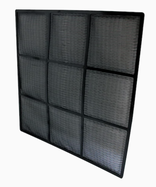 The image above is of a manufacturer's filter made of plastic. 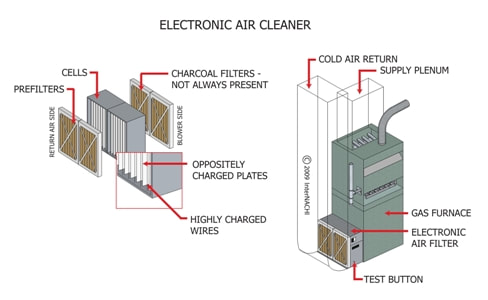 Electronic Filters Electronic air filters remove airborne particles from the air electronically. High-efficiency filters can remove about 80% to 90% of all particles. Some electronic filters have a charged media pad or mat that is made of fiberglass, cellulose, or some similar material. When these pads get clogged or dirty, they usually cannot be washed and require replacement. Some electronic air filters are two-stage filters. Air particles pass through not just one filtering device, but two electrically charged filters. There is typically a permanent screen or pre-filtering device. This first filter catches the larger particles before moving to the first electronic filter. In the first filter, the particles receive an intense positive charge. The positively charged particles are then attracted to the next filter that has collector plates. These plates are alternately charged with positive and negative voltages. The particles adhere to the negatively charged plates until the filter is removed and washed. Most devices have a built-in performance-indicator light that glows red when the unit is operating normally. Many electronic air filters have a pre-filter (or lint filter) and an after-filter. The after-filter is installed after the second set of charged collector plates. Electronic air filters need to be cleaned at least once every six months. Most electronic air filters can be washed in the dishwasher, but the manufacturer's recommendations should be followed. When the filters are put back into place, they must be re-inserted correctly so that the air flows in the proper direction. There are usually directional arrows marked on the filter components to guide their proper installation. Ultraviolet Filters People worried primarily about germs may consider an ultraviolet filter. The ultraviolet light zaps airborne bacteria and viruses into oblivion, which is why hospitals use UV air filters in tuberculosis wards. Extended Media Filters These filters are several inches thick and require a professional to install into the ductwork. HVAC Filter Performance and MERV There are two elements of HVAC filter performance:
Another measure of a filter’s effectiveness at removing particles is particle size efficiency, which is the fraction (or percentage) of particles captured on a filter. Particle size efficiency is measured across three particle‐size bins: 0.3 to 1.0 μm; 1.0 to 3.0 μm; and 3.0 to 10.0 μm. The percentages correspond to MERV ratings as shown in the table below, which is based on the National Air Filtration Association’s Understanding MERV Guide, and the U.S. Environmental Protection Agency’s (EPA) Residential Air Cleaners (Second Edition). The image above is of a Honeywell 20x20x5 MERV 13 air filter. Pressure Drop or Airflow Resistance The second aspect of HVAC filter performance is pressure drop or resistance to airflow. As the air stream passes through the filter, it decreases its velocity due to the resistance of the filter. This resistance is measured in inches of water column (IWC, or in. w.c.) at either a specific face velocity or airflow rate. The resistance to airflow of a brand new filter is called the “initial pressure drop,” whereas the resistance when the filter is loaded with particulates is called the “final pressure drop.” The contribution of the filter to the total system pressure drop is typically 20% to 50%, depending on the system's configuration, filter efficiency, and loading condition. HVAC system engineers and designers are supposed to take the initial pressure drop of the filter into account when determining how to size HVAC equipment and related ductwork for residential and commercial buildings. Resistance Causes Energy Consumption The resistance to airflow in a high static pressure system causes the controls of brushless permanent magnet (BPM) blower motors to increase speed and power draw to maintain system airflow, resulting in an increase in energy consumption. Permanent split capacitor (PSC) blower motors do not have airflow controls like BPM blower motors and thus will not increase power and speed to maintain system airflow. Instead, since PSC blower motors cannot adjust speed or torque, they reduce power draw and airflow in response to increasing system pressures. This is known as “fall off,” when the motor will stop pushing even though the fan continues to turn. As a result, the run time necessary to cool or heat the ambient air to the thermostat’s set‐point temperature is extended, which can lead to an overall increase in energy use. In addition, excessive pressure drop can damage the furnace due to overheating, can freeze condensing coils in air conditioning units, and can burn out blower motors. It’s important for homeowners to purchase filters with a pressure drop performance that meets their HVAC system's specifications in order to run their equipment efficiently and prevent damage. The Air Conditioning Contractors of America (ACCA) Manual D Residential Duct Systems offers guidance for sizing residential ducting systems, including sizing HVAC filters for pressure drop in the system. High MERV Can Clog Faster The accumulation of dirt and particles can greatly increase pressure drop across a filter. Because high-MERV filters can trap more particles, they are likely to clog faster than low-MERV filters. Choosing filters with deeper pleats (e.g., 4-inch pleats) will increase the surface area of the filter and potentially reduce the pressure drop while increasing or maintaining a high MERV rating. For example, a filter that has 4-inch-high pleats has twice the surface area of a filter with 2-inch-high pleats. If a homeowner wants to use a very high MERV filter, it may require the alteration or replacement of ducting if the pressure drop of the filter is greater than the pressure drop allotted to the filter in the system design. Another option is to advise the homeowner to purchase separate air filtration equipment that can clean the indoor air without impacting the performance of the HVAC equipment. Filters should be selected as part of the overall duct design process, as described in the Air Conditioning Contractors of America (ACCA) Manual D Residential Duct Systems. Accessible for Homeowners Making filters accessible for easy replacement and providing controls that tell homeowners when replacement is due will help to eliminate problems, such as clogging and filter collapse, which are more likely to occur with higher MERV filters. If exceptionally high filtration is desired (above MERV 13), some sources suggest using separate air filtration equipment with a HEPA filter that can clean the air without impacting furnace performance, although their functionality is localized, as opposed to whole-house. How to Select a High MERV Filter The builder or HVAC contractor should design the HVAC duct system using ACCA Manual D to determine the maximum static pressure that the filter can have and select a MERV 6 or higher filter within that limit, and adjust the duct size, duct length, and/or filter surface area as necessary to ensure that the total pressure drop across the system does not exceed the blower fan motor’s limit, given the size of the unit. Recommend MERV 6 or Higher In homes with ducted HVAC equipment, the HVAC inspector should look for HVAC systems with filters that are rated MERV 6 or higher. The HVAC technician or builder should have ensured that the HVAC system can accommodate the pressure drop associated with higher MERV filters. When certifying ENERGY STAR-certified homes, the HERS rater inspects to make sure that MERV 6 or higher filters are installed. When assessing EPA Indoor airPLUS and DOE Zero Energy Ready certified homes, the rater verifies that MERV 8 or higher filters are installed. 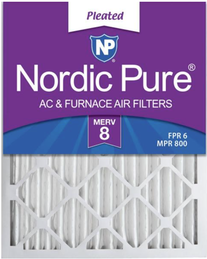 The image above shows a 14x25x2-inch pleated MERV 8 air filter made by Nordic Pure®. Short Helpful Video from "This Old House" Enjoy this short helpful video about air filter types. Credits to: Internachi https://www.nachi.org/
0 Comments
Leave a Reply. |
Archives
January 2024
Categories |
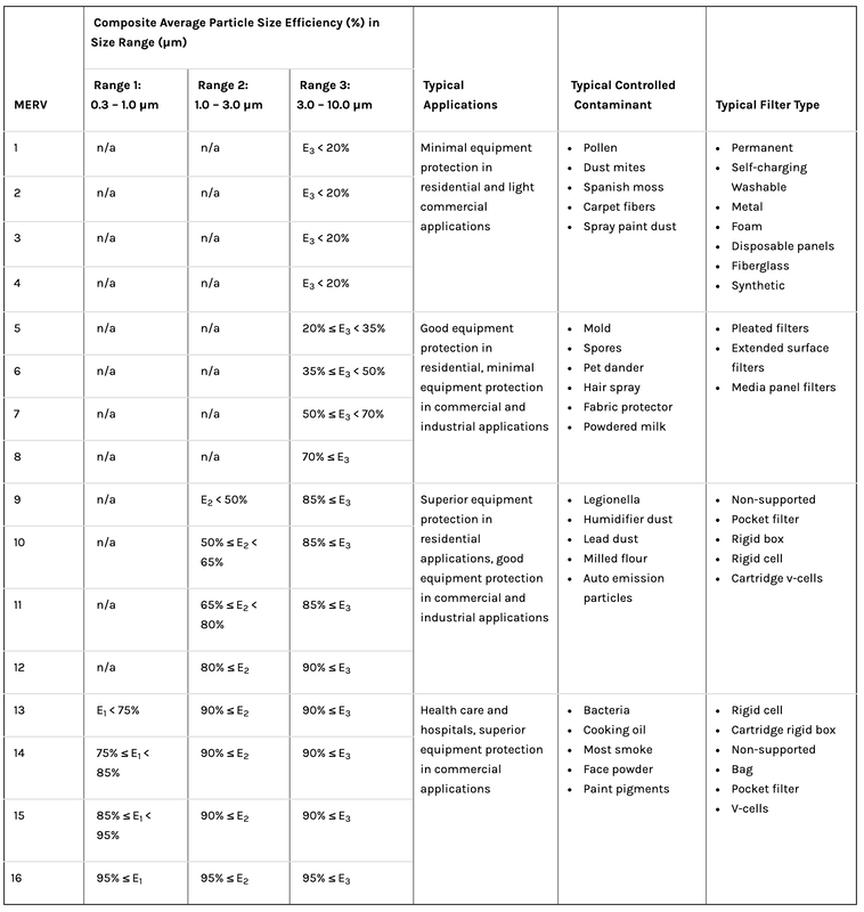

 RSS Feed
RSS Feed